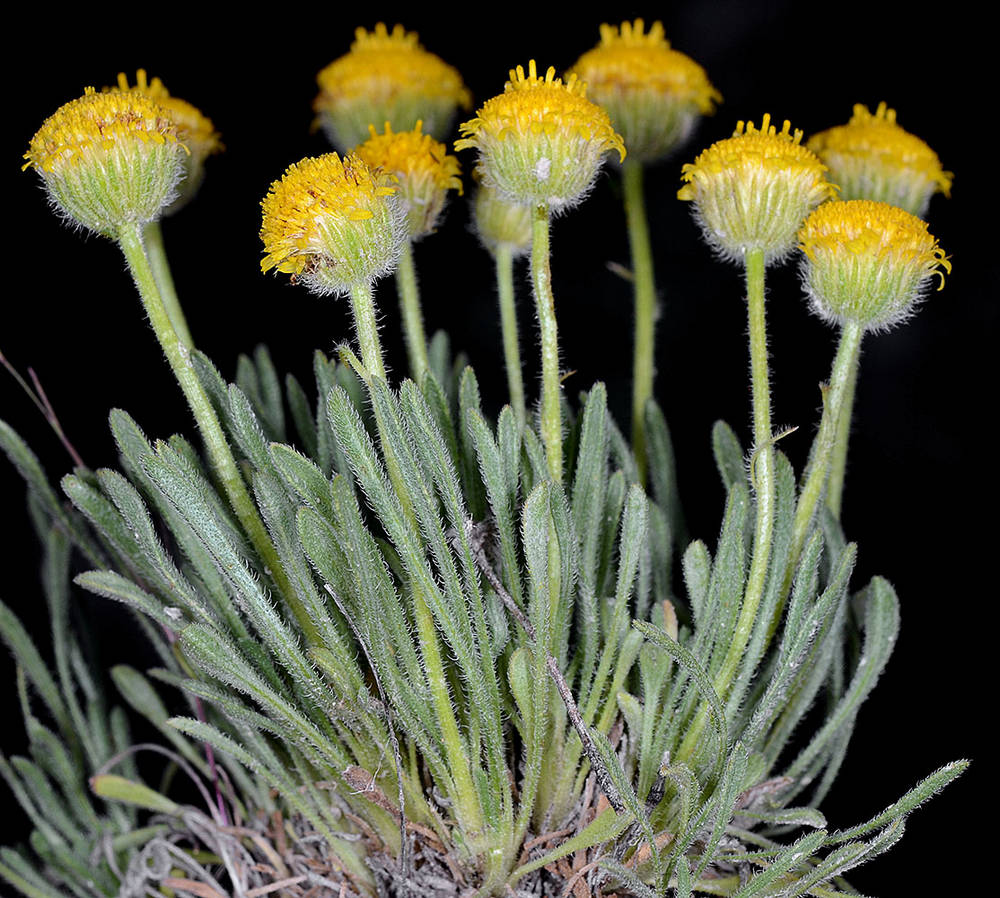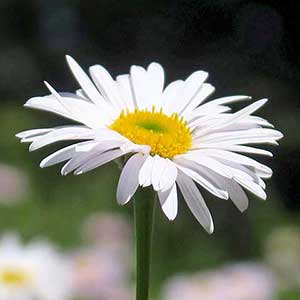Erigeron chrysopsidis
Erigeron aliceae
dwarf yellow fleabane
Alice Eastwood's fleabane
erect; hirsute, eglandular to minutely glandular.
erect, nearly glabrous or sparsely strigose often becoming more so distally, eglandular.
persistent in dense clusters, linear to narrowly oblanceolate, 10–80 × 1–3 mm;
margins entire with hispid hairs;
surfaces hirsute to hispid, sometimes nearing strigose.
usually persistent, lanceolate to oblanceolate, 50–120 × 10–30 mm;
margins entire, sometimes coarsely toothed with 1–5 pairs of teeth;
midveins prominent, rarely with 2 prominent veins;
surfaces remotely to moderately strigose.
abruptly reduced to (0)1–3 linear bracts.
well developed, lanceolate to narrowly elliptic, 10–80 × 3–14 mm, distally reduced, bases clasping.
4–7 × 10–16 mm.
5–7 × 13–17 mm.
20–60;
corollas with well-developed yellow rays, 4–8 × 0.5–2 mm, or tubular and short, or rays lacking.
30–80, white to lavender to purple;
rays 4–12 × 1–1.5 mm.
corollas 4–5 mm.
corollas 2–4 mm.
in 2–3 series, sparsely to moderately hispid-villous, often minutely glandular.
in 2–3 series, with dark green medial area;
surfaces white woolly-villous, glandular.
2–3 mm, moderately strigose;
inner pappi of numerous barbellate bristles.
2–3 mm, moderately to densely strigose;
inner pappi of numerous barbellate bristles.
1, radiate or disciform.
1–few, radiate.
Erigeron chrysopsidis
Erigeron aliceae
Western United States. 3 varieties.
Meadows, ridges, prairies. Flowering Jun–Sep. 400–2200 m. Casc, CR, ECas, Sisk. CA, WA. Native.
This is a variable species that can be confused with Erigeron glacialis. The woolly-villous phyllaries best distinguish E. aliceae from E. glacialis.
James Riser, Stephen Meyers
James Riser, Stephen Meyers





